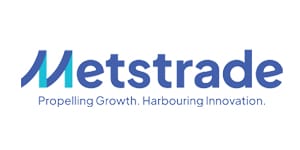Budget and carbon caps for 38th America’s Cup?

Just when the sailing world was drawing breath after the hullaballoo of the 37th America’s Cup, the 38th one starts its cycle.
And, this one’s looking to cap budgets and carbon. Seemingly, the defender and challenger have agreed to investigate and, where appropriate, implement meaningful campaign cost reduction measures while working on a strategy to further commercialise the America’s Cup.
This comes as the Royal New Zealand Yacht Squadron (RNZYS) and Emirates Team New Zealand officially confirmed that the RNZYS has accepted a Notice of Challenge for the 38th America’s Cup (AC38) from the Royal Yacht Squadron Limited, represented by INEOS Britannia. Not that there was much doubt about that, but now it’s official that INEOS will act as the Challenger of Record for AC38.
“As Emirates Team New Zealand’s AC75 crossed the finish line on Saturday 19th October, The Royal New Zealand Yacht Squadron received and accepted a challenge for the 38th America’s Cup from our long-standing British friends at Royal Yacht Squadron Limited,” says Gillian Williams – RNZYS Commodore, surprising no one at all.
“It is great to once again have the RYS involved, given they were the first yacht club that presented this trophy over 173 years ago, which really started the legacy of the America’s Cup. Along with Emirates Team New Zealand we look forward to building on the already strong foundation that working together on the 37th America’s Cup has created and will continue working through the details of the next event with them.”
So far the agreements cover the fact the AC38 will be a multi-challenger event in AC75s and should take place in around three years (hemispheres permitting). Teams will be restricted to building one new AC75. The existing crew nationality rule in the AC37 protocol will be retained (the emerging nations provisions will be reviewed).
Then there are a whole wedge of restrictions on sailing and testing of AC75 and AC40 yachts which include no sailing of AC75 yachts for a period of 12 months from the date of the final race in the AC37 match . . . except when participating in any preliminary regattas (with a dispensation for new teams).
No development is allowed on LEQ Yachts but there’s no restriction on the sailing of ‘in class’ AC40 yachts.
There’s going to be a limit on the total number of sailing days in AC75 yachts.
There’s also an intention to increase the number of preliminary regattas to provide more regular racing during the AC38 cycle with a mixture of AC40 & AC75 racing, with both fleet racing and match racing formats being considered for the AC40s and AC75s.
Continuity with challenger of record
“The 38th America’s Cup effectively started the moment the team crossed the finish line in Barcelona on 19 October,” says ETNZ CEO Grant Dalton.
“It is very exciting to have continuity with the Challenger of Record, INEOS Britannia, to continue to build the scale of the America’s Cup globally. The third generation AC75s and the unprecedented broadcast reach of the Louis Vuitton 37th America’s Cup in Barcelona has been hugely beneficial to this unique sporting event, and we look forward to announcing future plans in due course.”
Ben Ainslie, INEOS Britannia CEO & Team Principal, says: “The 37th America’s Cup proved to be huge success both on and off the water, showcasing the unique value of the America’s Cup as a global sporting property. We look forward to supporting the defender in developing the continued growth of the cup for AC38 and into the future.”
Both ETNZ and INEOS say they are committed to building on the success of the AC37 Women’s and Youth America’s Cup events.
Making a realistic difference with budget cap
Any campaign for the America’s Cup will involve substantial investment. While exact figures on the total expenditure are not readily available, the campaigns are resource-intensive.
For the 2021 America’s Cup, ETNZ reportedly spent around NZD $100 million to $150 million (USD $60 million to $90 million). Since then, costs have escalated due to inflation, technological advancement, and increased R&D in boat performance, pushing the expected budget significantly higher.
Boat construction and development, particularly with complex design requirements, is the start. Then there’s travel – given that training and campaigns take part in multiple international locations – the logistics and operational costs would add substantially to the budget.
Salaries of top-tier sailors, engineers, and designers involved command significant figures. Team expenses for an elite, multi-year sailing campaign are estimated at around USD $10 million to $15 million.
While major sponsors, such as Louis Vuitton, likely cover a portion of the budget, the operational needs (training boats, equipment, support staff, etc.) are a large expense.
What number is a meaningful cap set at, when such vast sums are involved?
Carbon footprint measures at events
As environmental goals become increasingly central to event planning, the America’s Cup implemented several sustainability measures aimed at reducing its carbon footprint. These included solar panels installed across various facilities, like the ETNZ base and public pavilions, and supporting clean energy use.
Port Vell featured water regeneration and recycling systems, photovoltaic power installations, and a carbon analysis initiative aimed at offsetting emissions generated by the event’s infrastructure. Through these measures, the America’s Cup organisers aimed to reduce emissions not only within the racing teams but also across the facilities used by spectators and the public.
Main image courtesy of Ian Roman America’s Cup.













